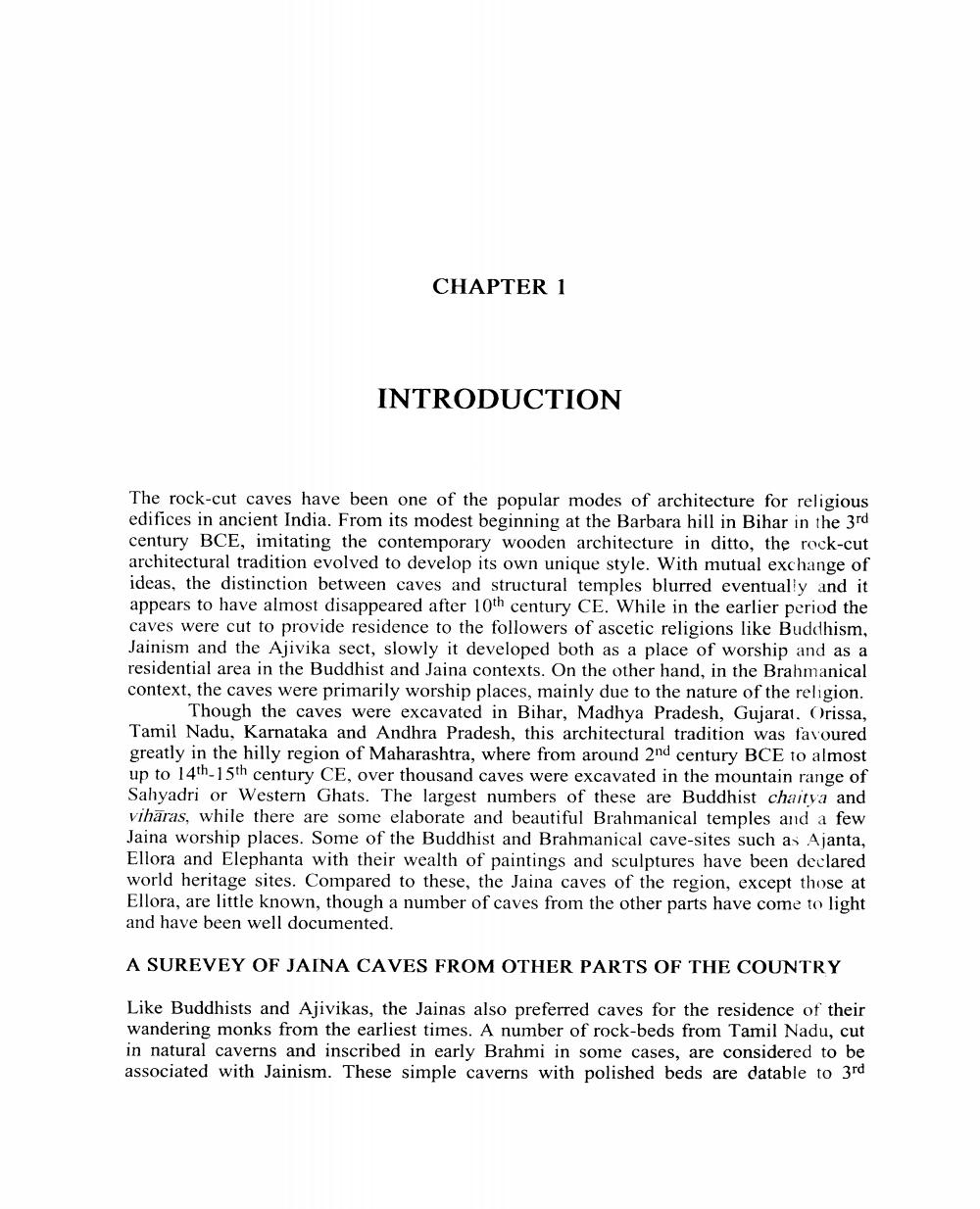________________
CHAPTER 1
INTRODUCTION
The rock-cut caves have been one of the popular modes of architecture for religious edifices in ancient India. From its modest beginning at the Barbara hill in Bihar in the 3rd century BCE, imitating the contemporary wooden architecture in ditto, the rock-cut architectural tradition evolved to develop its own unique style. With mutual exchange of ideas, the distinction between caves and structural temples blurred eventually and it appears to have almost disappeared after 10th century CE. While in the earlier period the caves were cut to provide residence to the followers of ascetic religions like Buddhism, Jainism and the Ajivika sect, slowly it developed both as a place of worship and as a residential area in the Buddhist and Jaina contexts. On the other hand, in the Brahmanical context, the caves were primarily worship places, mainly due to the nature of the religion.
Though the caves were excavated in Bihar, Madhya Pradesh, Gujarat. Orissa, Tamil Nadu, Karnataka and Andhra Pradesh, this architectural tradition was favoured greatly in the hilly region of Maharashtra, where from around 2nd century BCE to almost up to 14th 15th century CE, over thousand caves were excavated in the mountain range of Sahyadri or Western Ghats. The largest numbers of these are Buddhist chaitya and vihāras, while there are some elaborate and beautiful Brahmanical temples and a few Jaina worship places. Some of the Buddhist and Brahmanical cave-sites such as Ajanta, Ellora and Elephanta with their wealth of paintings and sculptures have been declared world heritage sites. Compared to these, the Jaina caves of the region, except those at Ellora, are little known, though a number of caves from the other parts have come to light and have been well documented.
A SUREVEY OF JAINA CAVES FROM OTHER PARTS OF THE COUNTRY
Like Buddhists and Ajivikas, the Jainas also preferred caves for the residence of their wandering monks from the earliest times. A number of rock-beds from Tamil Nadu, cut in natural caverns and inscribed in early Brahmi in some cases, are considered to be associated with Jainism. These simple caverns with polished beds are datable to 3rd




